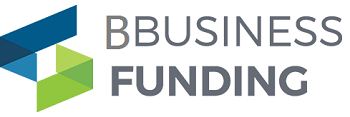Ecommerce fulfilment develops and advances not according to what customers want, but what customers have come to expect. Ecommerce perhaps more than most types of business is an “industry” (it’s not really an industry, but a means of commerce and distribution) which is very much led by those at front of the pack. This means that whatever the big players do has to become standard for everybody else.
Let us take a quick example. It was back in 2014 when Amazon first introduced same-day shipping for most customers in the U.S. These days, rapid shipping is not a bonus for a company, it is a necessity. If you cannot ship your products as quickly as possible, then the venture is not going to be successful. The big players have simply set new rules for the game and everyone else needs to keep up.
Shipping and Handling of Texas, an ecommerce fulfilment service out of Houston, say that this is a principle that applies to all new and emerging techniques and technologies used in ecommerce fulfilment.
Getting Ahead of the Game
However, far better than simply keeping up is taking the lead yourself. Depending on the size of your ecommerce venture, you may or may not have the capacity to adopt the latest advancements in ecommerce fulfilment. In either case though, it is a wise move to keep abreast of these developments. This will allow you to not only know the latest standards expected by customers, but also to predict the future ones and to plan accordingly.
What is Driving Change?
Before going on to a few of the latest advancements in ecommerce fulfilment, it’s best to know just what is driving this innovation. In one sense, this is even more important than knowing what that innovation is simply because it tells you what customers want and expect – or are soon to.
In fact, we can group the main drivers for change into three categories – speed, efficiency, and transparency. The first of these is well-illustrated by the example of Amazon’s same-day shipping above. In terms of efficiency, it is all about the warehousing and shipment infrastructure that allows products to be effectively tracked, changes to made at shorter notice, and the optimal number of orders given to each delivery channel.
Turning to transparency, this refers to a customer’s desire to be able to track their order, to know when it has been picked, dispatched, and so on. In time, we can perhaps expect customers to desire more control over this process too.
The Avant Garde of Ecommerce Fulfilment
So, what are some of these new innovations we can expect to soon transform ecommerce fulfilment?
Automation of Warehouses
Customers don’t know much about what goes on in warehouses, but greater automation is something which their expectations will soon make necessary. It is all about efficiency and error reduction. One manifestation of this is sure to be an increased number of robots operating in warehouses as well as Internet of Things (IoT) technology.
Inventory Proximity
One sure way to guarantee efficient order fulfilment is the proximity of inventory to the customers ordering it. There is also an environmental dimension to this as well. Accordingly, distribution networks are likely to become more complex.
Better Returns Policies
Returns are time consuming and expensive for ecommerce companies as things stand. This is something we can expect to change, and there is likely to be an incorporation of all the technologies we have discussed into a more cost-effective and speedier returns services.
To repeat, increased customer expectation is that which drives ecommerce fulfilment development. And, like it or not, there is nothing stopping this train.

